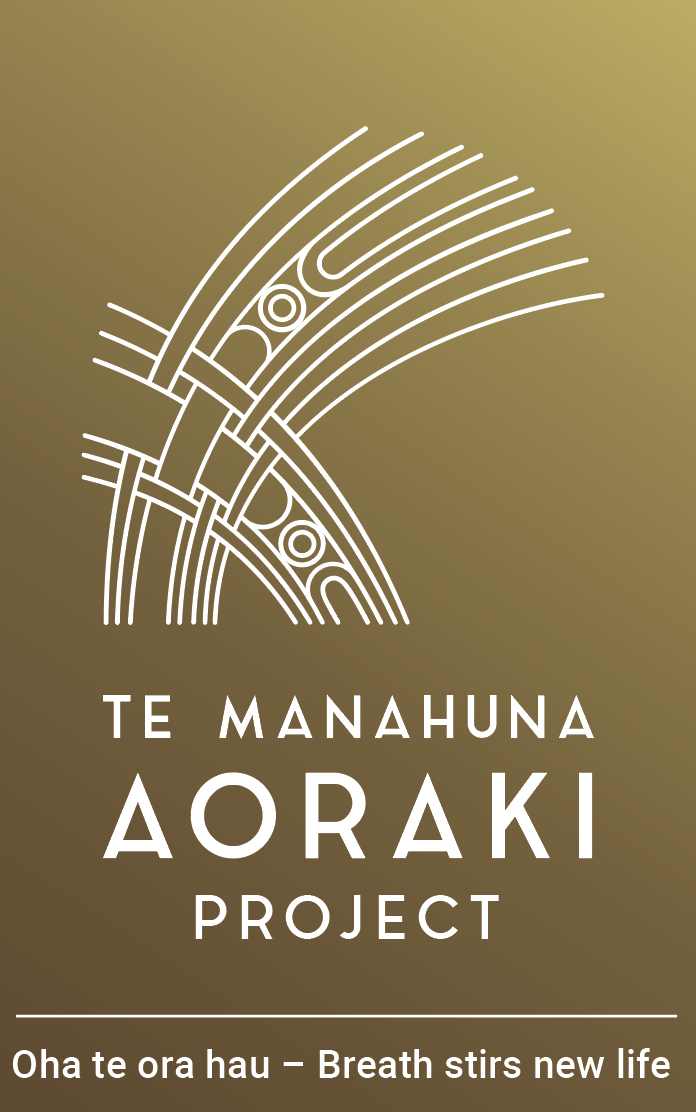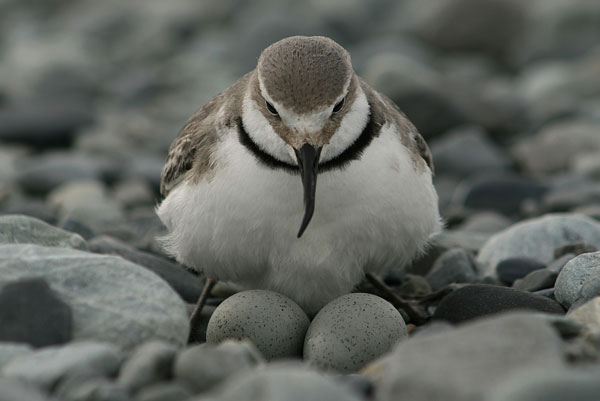No other bird in the world has a curved bill, and the wrybill’s always curves to the right. The shape of the bill allows them to probe for insects under river stones – and mayfly larvae are their particular favourite.
Ngutu pare breed on the braided riverbeds of the South Island, and then migrate north for winter. They are small plovers and breed in monogamous pairs. Their nests are a shallow scrape in the gravel, lined with many small stones, so they are very hard to spot, and when incubating, they rely on camouflage to avoid detection. Each pair defends a territory and nests alone. The chicks are guarded by one or both parents during at least their first three weeks of life.
Kahū/swamp harriers and karoro / black-backed gulls are natural predators. If camouflage doesn’t work, wrybill can use distraction – pretending to have a broken wing to lead predators away. However, that’s not a great strategy against introduced predators like feral cats, stoats, ferrets and hedgehogs.
Braided river birds are also very vulnerable to flooding. What is amazing is that they have evolved to produce multiple clutches of eggs as a way to cope with losing their nests.
Photo credit : Philip Guilford, George Empson, Liz Brown


